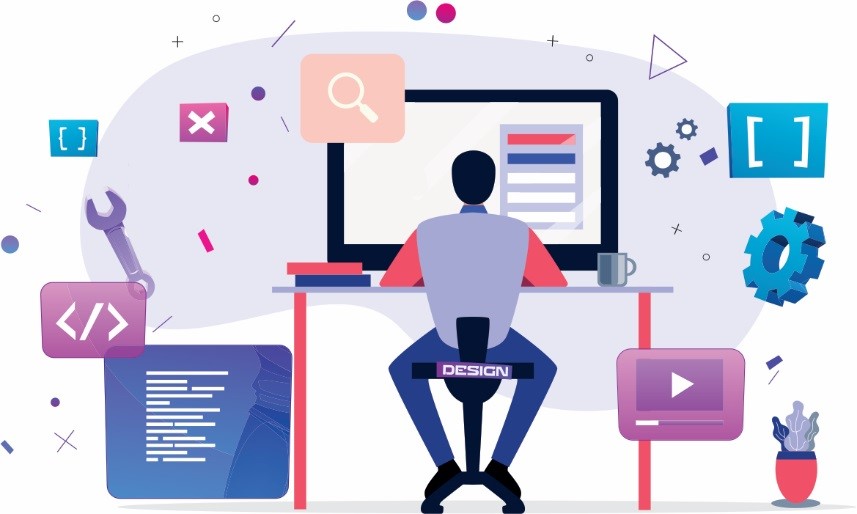Dedicated Developers vs. In-House Teams: Which Is Right for You?
The choice between utilizing dedicated programmers and maintaining an internal group is a substantial one that can influence the trajectory of your projects and general service technique. Conversely, internal groups contribute to a natural business culture and a nuanced understanding of lasting goals.
Comprehending Dedicated Designers
The expanding demand for specialized skills in the technology industry has actually caused the development of dedicated designers as a feasible option for many companies. These professionals are generally gotten on a job basis, allowing business to leverage certain expertise without the lasting commitment linked with full time hires. Committed developers are typically embedded within a client's group, supplying adaptability and scalability to meet job needs.
This design permits companies to access an international talent swimming pool, which is particularly useful in a rapidly progressing technical landscape. Committed designers can be sourced from numerous geographical areas, ensuring that business can discover the appropriate ability at competitive prices. They often bring a riches of experience and expertise, having serviced varied tasks throughout different industries.
Additionally, committed programmers can concentrate exclusively on the tasks at hand, enhancing efficiency and effectiveness. They are furnished to incorporate perfectly into existing workflows, collaborating carefully with internal groups to achieve task goals. This approach not just decreases the concern of recruitment and training however also permits companies to continue to be nimble, adapting swiftly to altering market needs and technical developments.
Advantages of In-House Teams

In addition, internal groups have a tendency to have a deeper understanding of the firm's objective, values, and goals. This placement can improve employee involvement and motivation, as employee really feel extra connected to their work and the organization's success. Furthermore, having a dedicated internal group permits far better alignment of purposes and techniques, as these participants are constantly concentrated on the business's top priorities.
Internal groups additionally assist in quicker decision-making procedures, as they can react extra quickly to challenges and modifications. The well established relationships and familiarity with business procedures permit streamlined workflows and decreased miscommunication. Inevitably, the mix of a natural society, placement with organizational objectives, and reliable interaction makes internal groups a valuable possession for many companies, particularly those looking to cultivate lasting growth and innovation.
Price Considerations
When reviewing cost factors to consider, both internal teams and committed designers present distinctive economic ramifications for organizations. Engaging dedicated developers generally entails a pay-per-project or hourly rate version, which can be cost-effective for companies with rising and fall job demands. This approach permits for versatility in scaling resources up or down, making certain that business only pay for the solutions they require.
In comparison, internal groups involve taken care of expenses, consisting of wages, advantages, and overhead expenditures such as workplace space and tools. While this version offers higher control and prompt accessibility of resources, it might bring about greater long-lasting expenditures, especially if the work does not justify a full time staff.
Additionally, companies should take into consideration the covert expenses related to recruitment and training of in-house employees, which can further stress budget plans. In many cases, the moment and resources invested on handling an internal team can detract from the organization's core organization goals.

Task Administration and Adaptability
Task management and adaptability are vital factors that influence the selection between devoted developers and in-house groups. Committed teams usually have developed processes for handling try here projects efficiently, leveraging details approaches like Agile or Scrum, which promote repetitive progress and versatility.

Inevitably, the choice in between internal teams and dedicated designers depends upon the preferred level of versatility and the specific task administration requirements. Business need to examine their functional characteristics, job complexity, and source accessibility to figure out which alternative straightens finest with their strategic purposes.
Making the Right Option
Selecting the appropriate advancement technique-- specialized designers or internal teams-- requires a cautious assessment of numerous aspects that line up with a company's tactical goals. dedicated development team. Think about the Learn More nature of the task. If it requires specialized abilities or a quick scale-up, committed developers may be preferable. Alternatively, internal groups can supply much better continuity and integration with existing employees.
Following, assess your budget. Dedicated address developers commonly present an economical option for temporary jobs, while internal groups might sustain higher long-lasting expenditures because of incomes, benefits, and expenses expenses. Evaluate the level of control and collaboration preferred; in-house teams generally foster stronger communication and placement with firm society.
If prompt outcomes are essential, dedicated designers can be onboarded rapidly, whereas building an internal team takes time for employment and training. If constant development is essential, investing in an internal team might yield far better returns over time.
Final Thought
In conclusion, the choice between devoted developers and internal teams hinges on project needs and organizational objectives. On the other hand, in-house groups cultivate a natural culture and deeper placement with lasting objectives.
The choice between making use of devoted programmers and keeping an in-house group is a significant one that can affect the trajectory of your projects and general business method.Task administration and adaptability are important elements that affect the option between in-house groups and dedicated programmers. software development partner.In contrast, in-house groups might succeed in preserving a regular project administration structure due to their experience with the company's society and long-term objectives. Dedicated designers often provide an affordable solution for short-term jobs, while internal groups may sustain greater lasting expenditures due to incomes, advantages, and overhead costs.In conclusion, the choice in between internal teams and committed designers hinges on task demands and organizational objectives
Comments on “Hire Dedicated Developers to Accelerate Your Software Development Timeline”